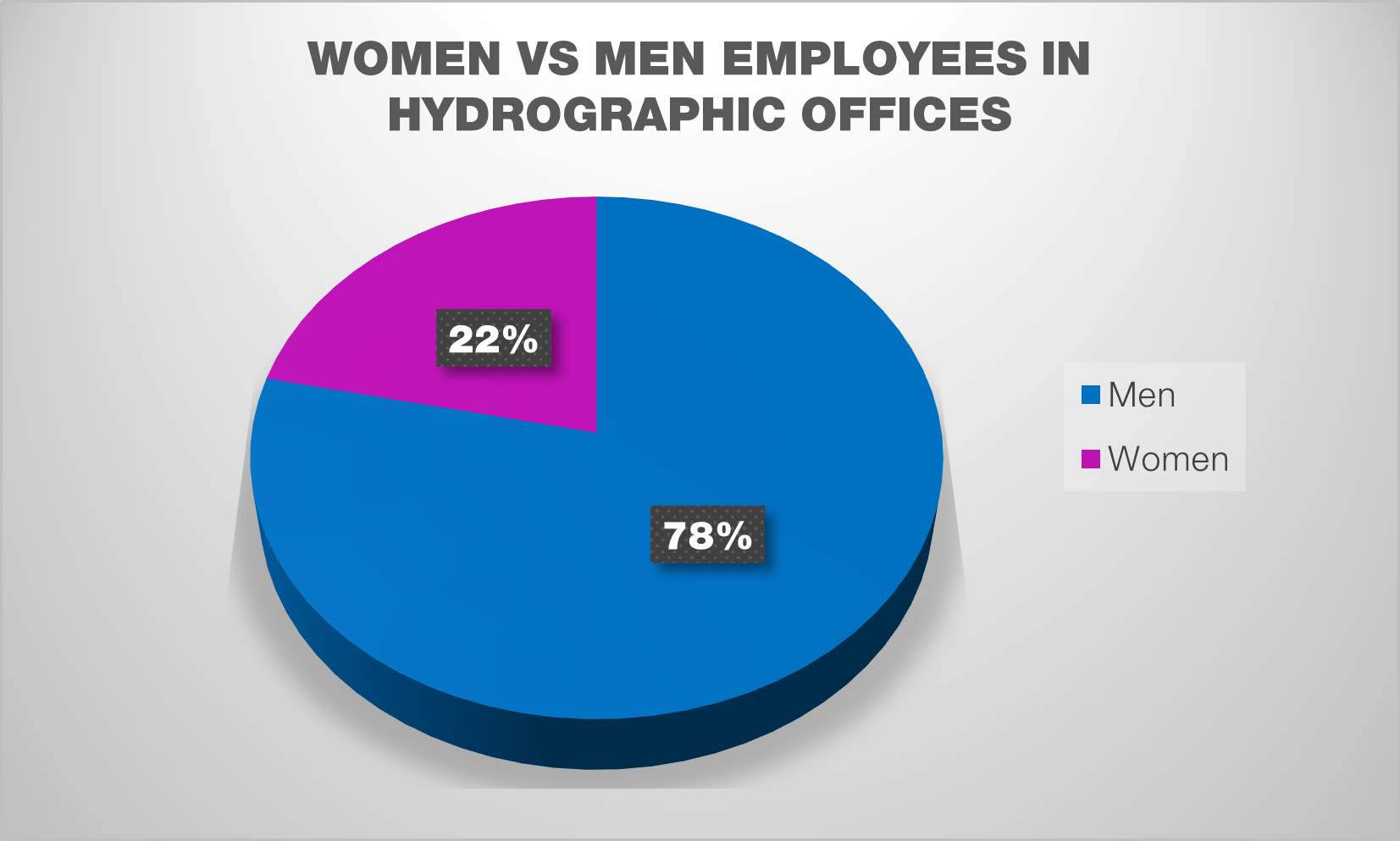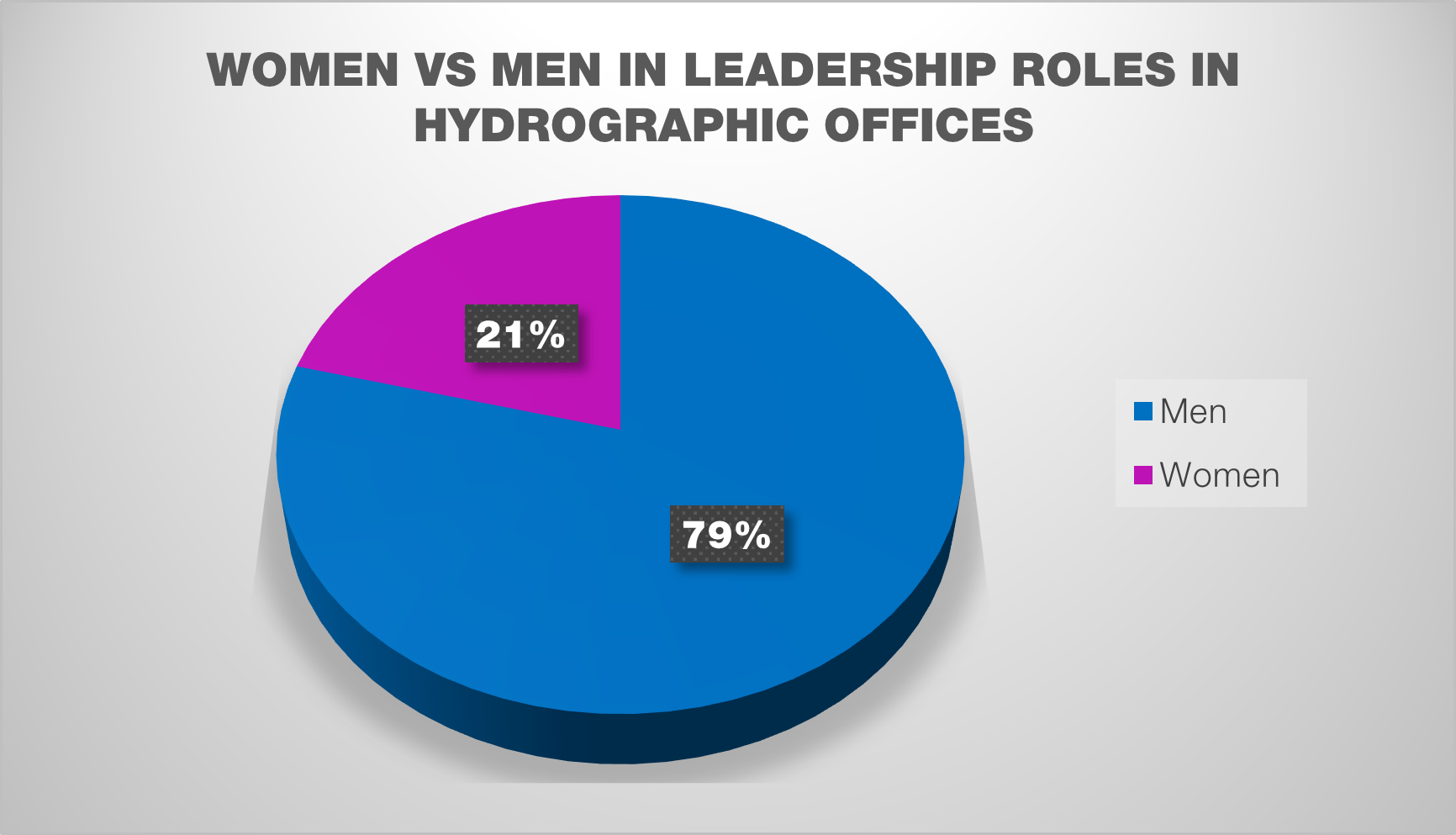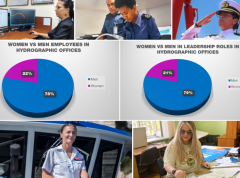Women in Hydrography: New Data Reveal Gains in Leadership, Gaps in Workforce Representation
Date de publication: 24/11/2025 - 11:18The latest data on the number of men and women working in hydrography have been released. With 51 IHO Member States answering the EWH 2025 survey, the results reveal advancements in some areas but also challenges.
While globally women make up approximately 22% of staff in national Hydrographic Offices, this marks a decrease of 12% compared to 2022. However, when it comes to leadership positions, women now hold 21% of the leadership roles, marking a 5% rise.


The results of the survey highlight an imbalance within the field of hydrography, with men currently holding nearly 80% of all positions and leadership roles. However, as a sign of the interest in this topic, the 2025 survey saw a 15.1% increase in the participation rate of IHO Member States compared to 2022.
These results follow on from another study, conducted by the IHO Secretariat in early 2025, which revealed that the percentage of female national hydrographers had almost doubled since 2021, rising from 7% to 13%. Similarly, the proportion of women chairing IHO bodies rose from 13% to 24%, and currently 32% of IHO bodies have a woman as vice-chair.
“Hydrography is a technical field, but in order to carry out this technical work, we need qualified staff. The global market is highly competitive, and we should put all the chances on our side to succeed in attracting the right staff whatever their gender and ethnic roots.”
- Dr Mathias Jonas, Secretary-General of the International Hydrographic Organization
With many organizations around the world looking for ways to attract and retain a qualified workforce, finding ways to make good use of the entire talent pool makes business sense. The overwhelming quantity of research in this field highlights a clear pattern: organizations with more gender and ethnic diversity do better in the long run. Following a study of 1,265 companies, in 23 countries, and 6 global regions, the fourth edition of the McKinsey report Diversity Matters Even More1, showed that companies in the top quartile for gender diversity were 39% more likely to financially outperform organizations in the bottom quartile. This is up from 15% in 2015. Furthermore, the 2023 report shows that organizations with the least gender and ethnic diversity in their executive teams are 66% less likely to outperform financially. Surging from 27% in 2020, this indicates that “lack of diversity may be getting more expensive”.
Various reports on this topic are careful to highlight that it is not necessarily just the fact there are more women in the workplace that are leading to these results. But organizations which foster an environment where different points of view and ideas can be expressed provide the necessary conditions for innovation and to adapt to the requirements of their stakeholders. In an article by the Harvard Division of Continuing Education2, M.S. Emerson argues it comes down to organizational health: “This is true across many different dependent variables, from problem solving to analytic thinking to communication. And when taken together, success across these different variables adds up to strong financial performance.”

The first EWH survey was carried out in 2022, when data was collected to establish a baseline on the representation of women both employed in and holding leadership positions within national hydrographic offices. To assess any changes since then, the survey was conducted again in 2025.
The IHO's EWH project, aims to raise awareness of career opportunities in hydrography and increase the number of women in leadership positions. Since the implementation of the EWH project in 2021, 32 candidates from 25 countries have benefitted from internships, training, on-board experiences, and participation in IHO meetings.
The EWH project was initially launched thanks to a contribution from Canada and has received financial support from Denmark, Belgium and Norway, as well as in-kind contributions from U.S.A., France, and others. The United Kingdom is also participating with a dedicated fund to support initiatives. Numerous countries contributed insights into their internal practices by providing videos, documentation, and supplementary resources, all of which are accessible via the designated section of the IHO website.
The IHO Secretariat would like to thank the Member States that participated in the 2025 EWH survey and encourages all IHO Member States to consider participating in the EWH Project.
For more information on the activities carried out, please visit: https://iho.int/en/project-activities
---------------------------------------------------------------------------------------
1Diversity Matters Even More, (2023), McKinsey & Company
2M.S Emerson, (27 March 2024), Why Gender Equity in the Workplace is Good for Business, Harvard Division of Continuing Education




Share this page: